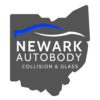From Crumple Zones to Airbags
Vehicle design is a critical factor in ensuring the safety of drivers and passengers in the event of a collision. Over the years, advancements in technology have led to significant improvements in vehicle safety features. In addition to crumple zones and airbags, vehicle design also takes into consideration factors such as the materials used in construction, the structural integrity of the vehicle, and advanced safety technologies like electronic stability control and automatic emergency braking systems.
Crumple Zones
When a vehicle is involved in a collision, the kinetic energy of the impact is transferred through the vehicle. Crumple zones are strategically placed in areas that are most likely to be impacted during a crash, such as the front and rear of the vehicle. These zones are designed to crumple and deform upon impact, effectively dissipating the energy of the crash and reducing the force experienced by the occupants.
Airbags
In addition to crumple zones, another important safety feature in vehicle design is the implementation of airbags. Airbags are designed to deploy upon impact during a collision, providing a cushioning effect for the occupants and reducing the risk of serious injury.
Modern vehicles are equipped with a variety of airbags, including front airbags for the driver and front passenger, side airbags for protection in side impacts, and curtain airbags that deploy from the roof to protect occupants in rollover accidents. Some vehicles also feature knee airbags to provide additional protection for the driver and front passenger’s knees in a crash.
Seat Belts
Airbags work in conjunction with seat belts to provide optimal protection for passengers in the event of a crash. The combination of airbags and seat belts helps to prevent occupants from hitting hard surfaces inside the vehicle, reducing the risk of head, chest, and other injuries.
Structural Materials
When it comes to vehicle design and collision safety, one of the most important aspects to consider is the materials used in constructing the car’s structure. Advanced vehicle materials play a crucial role in ensuring the structural integrity of a car during a crash, ultimately helping to protect the occupants inside.
One of the key considerations when choosing materials for a car’s structure is their ability to absorb and dissipate energy in the event of a collision. Materials like high-strength steel, aluminum, and carbon fiber are commonly used in modern vehicles for their ability to effectively absorb impact energy and reduce the likelihood of deformation or intrusion into the passenger compartment.
High-strength steel, for example, is known for its high tensile strength and ductility. This makes it an ideal choice for reinforcing critical areas of the vehicle’s structure.
Aluminum, on the other hand, is lightweight yet strong, making it a popular choice for components that need to be both sturdy and light.
Carbon fiber is another material that is increasingly being used in vehicle construction due to its high strength-to-weight ratio. While carbon fiber can be expensive, it offers excellent crash protection while also reducing the overall weight of the vehicle.
Advanced Driving Safety Technologies
Advanced safety technologies are also integrated into modern vehicles to further enhance collision safety. Electronic stability control, for example, helps to prevent skidding and loss of control during emergency maneuvers. Automatic emergency braking systems use sensors to detect potential collisions and automatically apply the brakes to reduce the severity of impact or avoid a crash altogether.
Related Reading:
- Watch Zoox’s driverless robotaxi endure crash tests, thanks to unique safety designs [Video]
- Tesla Shows a Rare Footage of Cybertruck’s Crash Test
Pro Tips
It is important for consumers to understand the role that vehicle design plays in collision safety when purchasing a new vehicle. By choosing a vehicle with strong crumple zones, multiple airbags, and advanced safety features, drivers and passengers can greatly reduce their risk of serious injury in the event of a crash.
Furthermore, it is essential for drivers to properly maintain their vehicles and ensure that all safety features are in working order. Regular maintenance checks and inspections can help identify any issues with crumple zones or airbags, allowing for prompt repairs to be made before they are needed in a collision.
Conclusion
Understanding vehicle design and collision safety is essential for both consumers and drivers. By choosing a vehicle with advanced safety features and properly maintaining it, individuals can significantly reduce their risk of injury in the event of a crash. From crumple zones to airbags, each aspect of vehicle design plays a crucial role in protecting the lives of those inside the vehicle.
By prioritizing safety when selecting a vehicle and staying proactive with maintenance, individuals can help ensure that they are well-protected on the road. Vehicle design continues to evolve and improve, making it easier than ever to stay safe while behind the wheel.
Ohio Drivers: Contact Newark Autobody for Your Auto Body Repair Needs
Newark Autobody Collision and Glass
977 Mount Vernon Road
Newark, Ohio 43055
Phone: (740) 899-4111
Fax: (740) 888-3500

